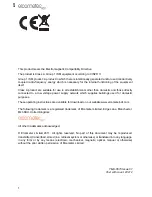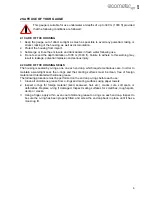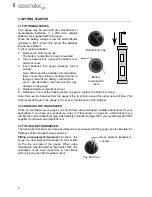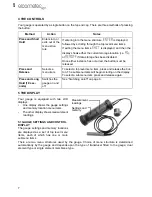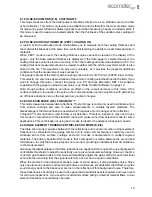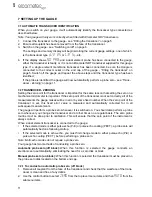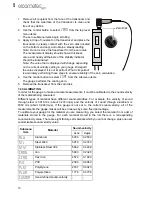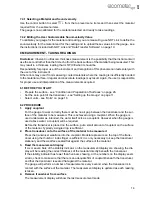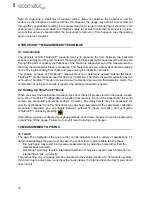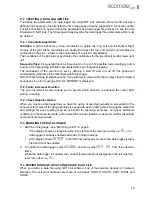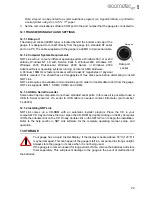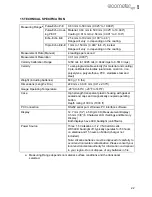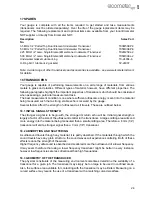
11
en
7 SETTING UP THE GAUGE
7.1 AUTOMATIC TRANSDUCER IDENTIFICATION
When you switch on your gauge, it will automatically identify the transducer type connected as
described below:
Note: Your gauge will only work correctly when fitted with Elcometer NDT transducers.
1.
Connect the transducer to the gauge - see “Fitting the transducer” on page 5.
2.
Ensure all couplant has been removed from the face of the transducer.
3.
Switch on the gauge - see “Switching on/off” on page 6.
The settings and memory display will begin scrolling the current gauge settings, one of which
is the transducer type (
1/2 2S
or
1/2 5
)...etc.
4.
If the display shows
NO PRB
, and a dual element probe has been connected to the gauge,
either the transducer is faulty, or it is not an Elcometer NDT transducer supplied for this gauge
type. If a single element membrane transducer has been connected, be sure the dongle is
connected to the correct socket on the end cap of the gauge - “Fitting the transducer” on
page 5. Switch off the gauge and repeat the above steps until the transducer type has been
identified.
If the probe is identified, the gauge will now automatically perform a probe zero - see “Trans-
ducer - Zeroing” on page 11.
7.2 TRANSDUCER - ZEROING
Setting the zero point for the transducer is important for the same reason that setting the zero on a
mechanical micrometer is important. If the zero point of the transducer is not set correctly, all of the
measurements the gauge makes will be in error by some fixed number. When the zero point of the
transducer is set, this fixed error value is measured and automatically corrected for in all
subsequent measurements.
The gauge will perform a probe zero whenever it is switched on. You should also perform a probe
zero whenever you change the transducer and at other times on a regular basis. The zero probe
routine
must
be done prior to calibration. This will ensure that the zero point of the instrument is
always correct.
When a dual element transducer is connected to the gauge:
•
If the selected mode is either pulse-echo (P-E) or pulse-echo coating (PECT), a probe zero will
automatically be done following startup.
•
If the selected mode is echo-echo, you must first change mode to either pulse-echo (P-E) or
pulse-echo coating (PECT), before performing a probe zero.
Note: Multi-echo modes do not require a probe zero.
Your gauge has two methods of conducting a probe zero:
Automatic probe zero (off block):
When this function is selected the gauge conducts an
electronic zero automatically, eliminating the need for a zero disk or block
Manual probe zero (on block):
When this function is selected the transducer must be placed on
the probe zero disk located on the bottom end cap.
7.2.1 To conduct an automatic probe zero (off block)
1.
Remove all couplant from the face of the transducer and check that the wearface of the trans-
ducer is clean and free of any debris.
2.
Use the control button to select
ZERO
from the top level menu items and then
AUTO
from the
submenu items.


